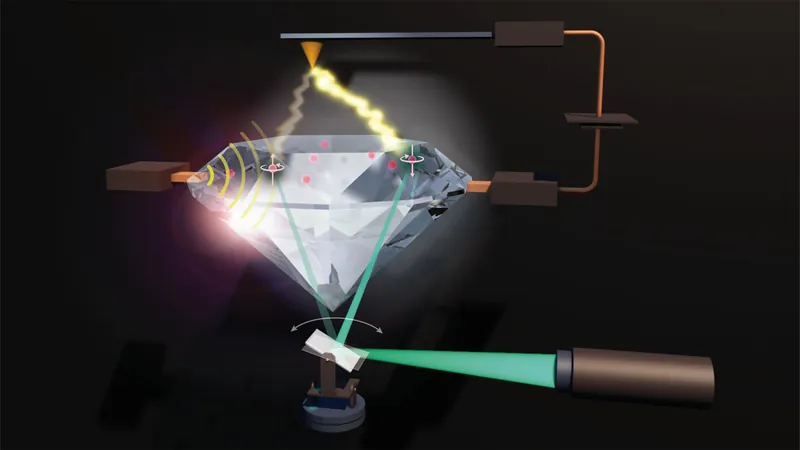
Revolutionary Breakthrough: Detecting Individual Spins with Photovoltage in Diamonds!
2025-04-15
Author: Li
Unlocking the Secrets of Quantum Information
In an astonishing leap for quantum technology, researchers at HZB have unveiled a groundbreaking method to detect individual spins in diamonds—utilizing photovoltage! This innovation may not only enhance the design of quantum sensors but also open new horizons for quantum computing.
The Magic of Diamonds and Spin States
Diamonds, often seen merely as precious stones, possess unique optically active defects that can transform them into powerful sensors and qubits. These nitrogen vacancy (NV) centers within diamonds allow for the manipulation and measurement of electron spin states, which are crucial for storing quantum information. However, extracting this vital data has been a daunting challenge due to the complex experimental setups required.
A Game-Changing Method: The Power of Photovoltage
Published in the prestigious journal Nature Communications, the research team led by Dr. Boris Naydenov has devised a remarkable solution. Instead of relying solely on weak photon emissions—a method fraught with difficulty—the team cleverly leveraged the electrical charges associated with these defect centers. They adapted a technique known as Kelvin probe force microscopy (KPFM), enabling them to measure the generated photovoltage when NV centers are excited by a laser.
Spin Detection at Its Finest
"By measuring the photovoltage, we can directly read out the individual spin states of the NV centers," explains Ph.D. student Sergei Trofimov, who played a key role in the discovery. This method not only allows detection but also enables the observation of spin dynamics through coherent manipulation using microwave excitation.
Towards Compact Quantum Devices
This revolutionary readout method could pave the way for the development of ultra-compact diamond-based devices. Dubbed a potential game-changer by Prof. Klaus Lips, head of the Spins in Energy Conversion and Quantum Information Science department, the technique eliminates the need for cumbersome optics and single-photon detectors, making it easier and more practical to harness the power of quantum information.
Broader Implications for Solid-State Physics
But the excitement doesn’t stop there! The applications of this newly developed method extend beyond diamonds, offering promising prospects for other solid-state systems exhibiting electron spin resonance. This breakthrough could ignite a new era in the realm of quantum technologies, bringing us closer to powerful and efficient quantum computing solutions.

 Brasil (PT)
Brasil (PT)
 Canada (EN)
Canada (EN)
 Chile (ES)
Chile (ES)
 Česko (CS)
Česko (CS)
 대한민국 (KO)
대한민국 (KO)
 España (ES)
España (ES)
 France (FR)
France (FR)
 Hong Kong (EN)
Hong Kong (EN)
 Italia (IT)
Italia (IT)
 日本 (JA)
日本 (JA)
 Magyarország (HU)
Magyarország (HU)
 Norge (NO)
Norge (NO)
 Polska (PL)
Polska (PL)
 Schweiz (DE)
Schweiz (DE)
 Singapore (EN)
Singapore (EN)
 Sverige (SV)
Sverige (SV)
 Suomi (FI)
Suomi (FI)
 Türkiye (TR)
Türkiye (TR)
 الإمارات العربية المتحدة (AR)
الإمارات العربية المتحدة (AR)